While there are many types of philodendrons, the White Princess philodendron is one of the most coveted among collectors. This stunning plant is the crown jewel of any indoor plant collection, with a unique appearance that stands out among other species.
In this article, we’ll cover how to care for the White Princess philodendron with top tips to help this stunning plant thrive.
Let’s dig in!
What Are White Princess Philodendron Plants?
White Princess philodendrons are a hybridized plant with mysterious origins. They are believed to be a hybrid of Philodendron erubescens, similar to the Pink Princess philodendron. Philodendron erubescens is known colloquially as a blushing philodendron for its red flowers and pink hues.
However, no one has claimed or patented the White Princess. Many surmise that, like the Congo Rojo and thousands of other species, White Princess is the work of famed Floridian Robert McColley. However, other cultivars and hybrids crafted in his nursery feature patents, so the origin of this rare beauty remains a mystery.
Appearance
The White Princess has waxy green leaves with white variegations. Some leaves may be almost entirely white, giving a nearly albino appearance.
This lovely hybrid will grow 4-5 feet tall indoors with proper placement and care.
Native Region
The White Princess is a hybrid of unknown origins, so it has no true native region. However, its suspected parent plant, Philodendron erubescens, is native to Columbia. If McColley created this majestic hybrid, it would likely be cultivated in Florida.
Uses
The White Princess philodendron is rare and difficult to find in most plant stores. It’s considered a collector’s item and used for ornamental purposes.
Toxicity
Unfortunately, the White Princess, like all philodendrons, is toxic to pets and people. Keep this in mind if you have children or curious cats and dig-loving dogs.
Plant Parent Experience Level
Philodendrons are beginner-friendly. However, the White Princess is a bit higher maintenance than other species—it’s royalty, after all!
Temperature control is essential for this beauty to thrive. Consider starting with other philodendrons before upgrading to this rare gem.
With that in mind, let’s dig into how to care for your White Princess philodendron.
1. Light Requirements
While the White Princess doesn’t naturally grow in the rainforest, its needs are true to its genus. Like other philodendrons, the White Princess needs bright, indirect sunlight.
Ample light is essential to help your White Princess photosynthesize and grow. However, bright, direct sunlight can scorch the leaves and stress your plant. Consider that philodendrons grow under thick canopies that diffuse the intense tropical sunlight.
2. Soil Requirements
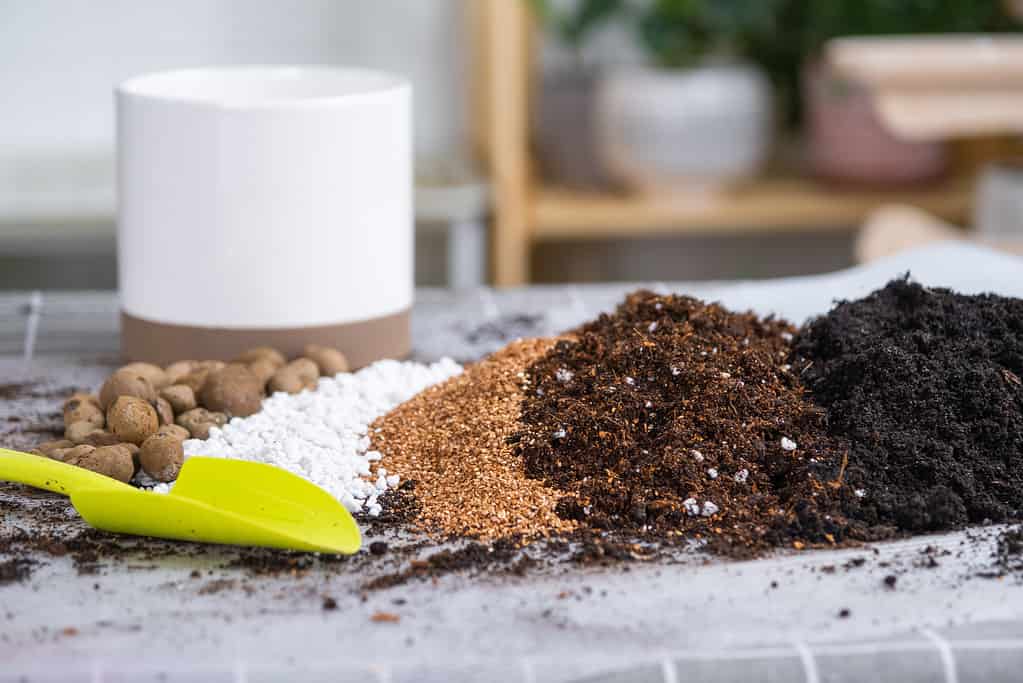
Select an aroid-friendly soil for your White Princess.
©Ольга Симонова/iStock via Getty Images
Look for pre-mixed soil for aroid plants for your White Princess philodendron. These soils strike a balance between ample drainage and moisture retention to give your philodendron the humidity it needs without causing root rot.
You can create your own blend using basic potting soil and mixing in organic matter and perlite to improve the quality and drainage.
3. Water Regularly

Your plant has specific water needs and should never dry out.
©iStock.com/Tgordievskaya
Avoid letting your White Princess philodendron dry out completely. The soil should be kept moist without being water-logged.
Use your finger to test the top inch of soil. If it’s dry, water your plant thoroughly, letting the water run through and removing the excess from the tray. Oversaturation could lead to root rot, killing your rare and beautiful White Princess.
4. Choose a Well-Draining Pot
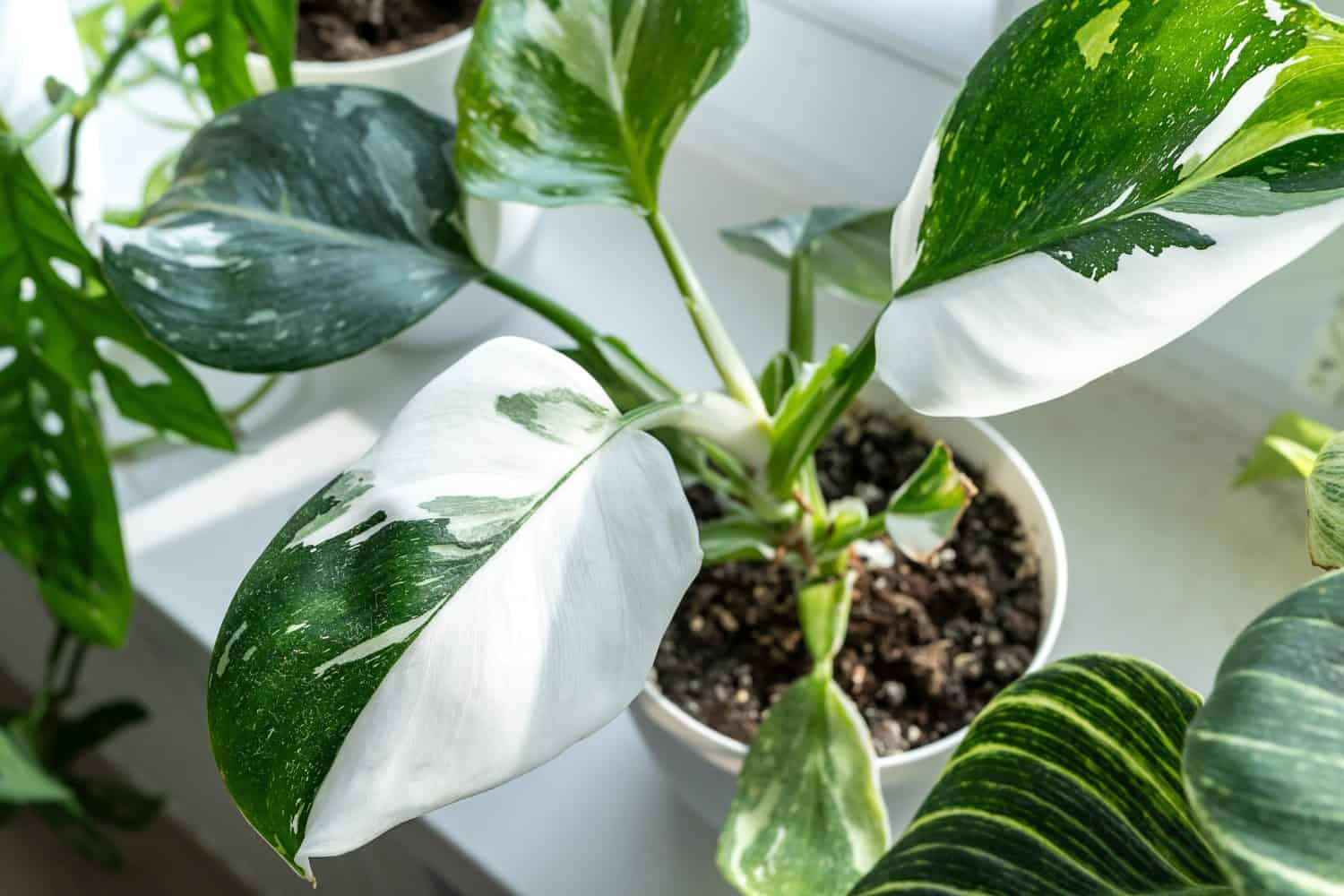
The White Princess can handle a tight-fit pot but needs adequate drainage.
©Chekyravaa/Shutterstock.com
Philodendrons will survive in almost any vessel as long as it has sufficient drainage. Choose a pot with drainage holes, or carefully create your own. Letting the water run through rather than letting it sit on the roots is essential for the longevity of your plant.
Choose a pot that leaves 2-3 inches around the root ball of the philodendron. The White Princess doesn’t mind a close fit, but you shouldn’t let it become rootbound.
5. Control the Humidity
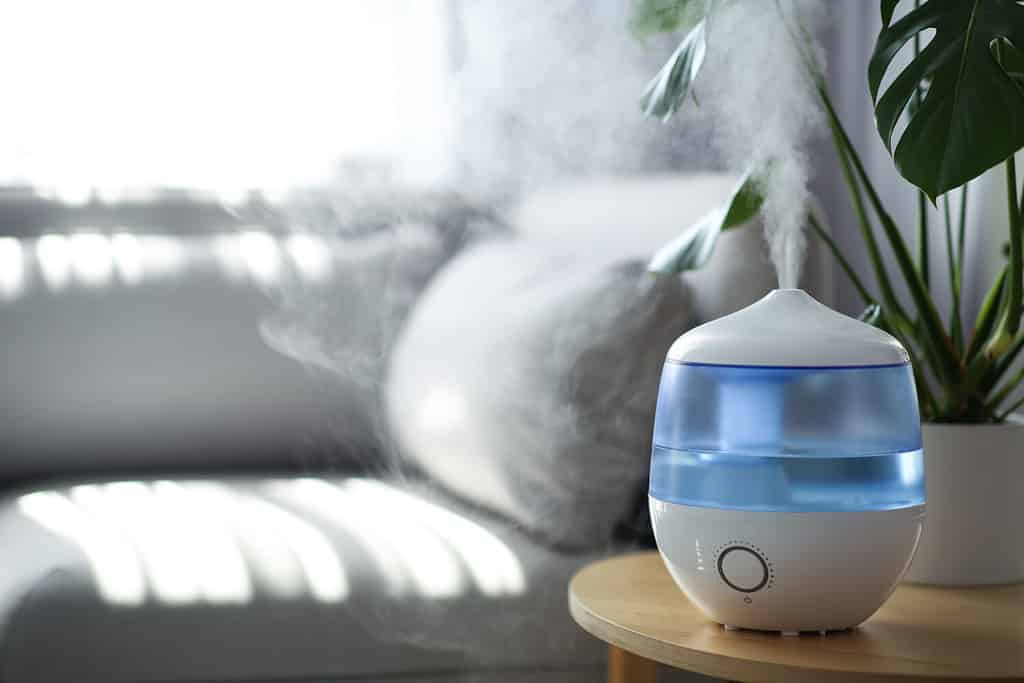
Placing a humidifier near your philodendron will help it thrive.
©New Africa/Shutterstock.com
While all philodendrons thrive in humid environments that replicate their origins, the White Princess is higher maintenance in this area.
Ensure your plant is kept in a space with a 60%-80% humidity range, like a steamy bathroom. Alternatively, invest in a humidifier to keep this plant happy. A tray of pebbles and water may help, but it is likely insufficient for this moisture-loving plant.
6. Control the Temperature

Your White Princess will prefer less cold temperatures, so keep away from any cold spots in your home and monitor the temperature regularly.
©AntonSAN/Shutterstock.com
This hybrid is less cold-tolerant than natural philodendron species. Keep it in a place that doesn’t dip below 65°F (18°C). It’s also important to ensure the White Princess is placed away from potential drafts and vents.
7. Fertilization Needs
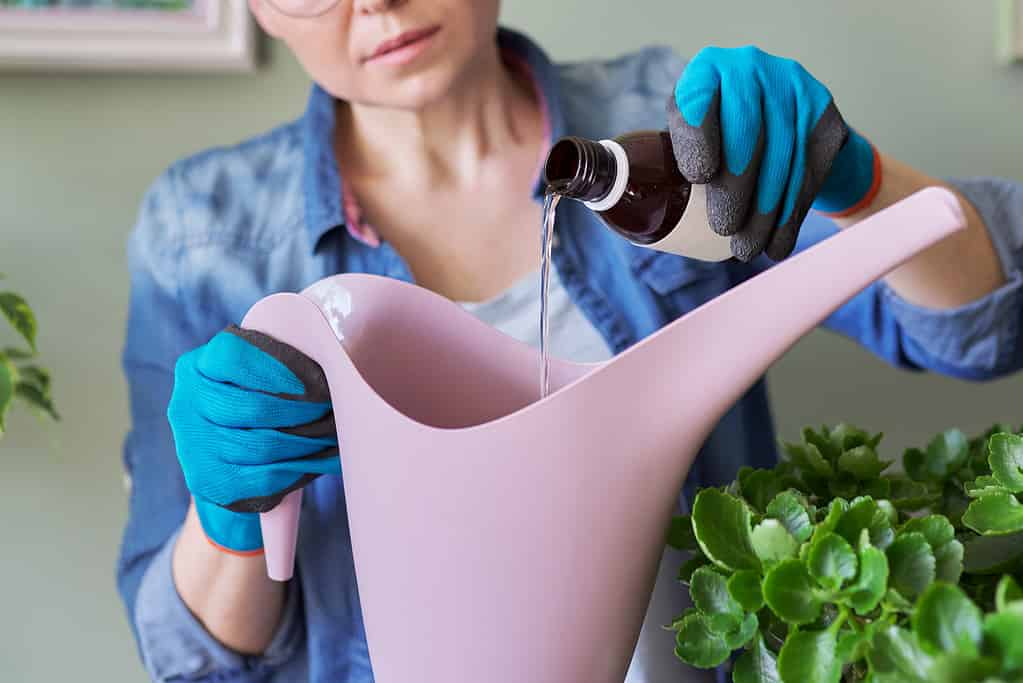
Choose a fertilizer with higher nitrogen levels or a balance between nitrogen, phosphorous, and potassium.
©Valeriy_G/iStock via Getty Images
While most philodendrons do well without extra feedings, White Princess requires regular fertilization to thrive—especially during the growing season.
Choose a balanced tropical plant food option or look for a higher nitrogen ratio for this stunning plant. Dilute the formula according to instructions and avoid fertilization during winter when the plant is dormant.
8. Prune Regularly
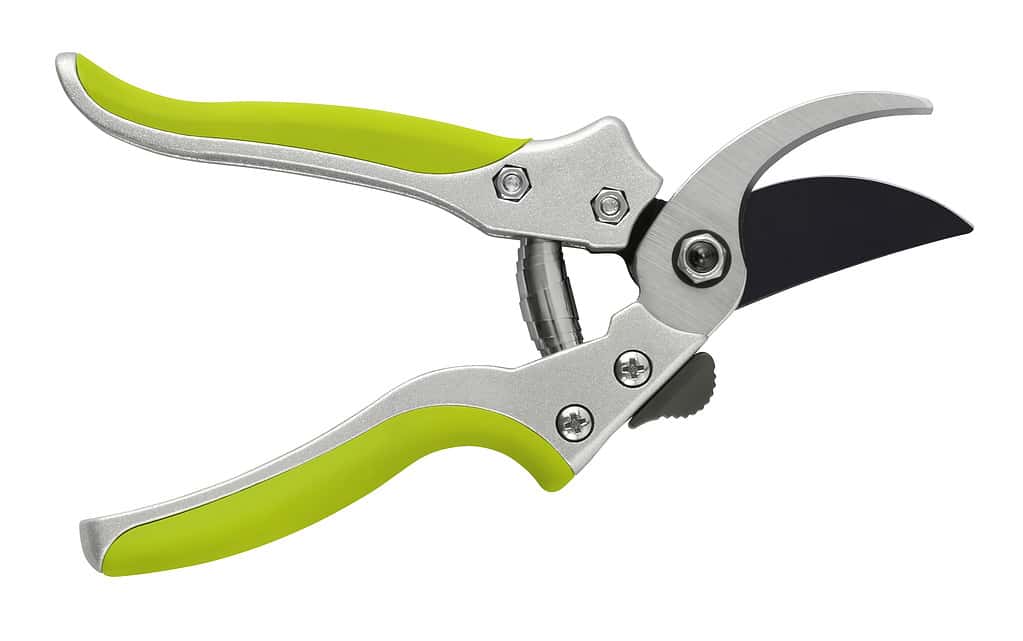
You don’t need to prune as frequently as other philodendrons, just make sure to remove dead and dying tissue.
©Visivasnc/ via Getty Images
Fortunately, the White Princess typically requires less pruning than other philodendrons. Trim away dead or dying tissue as needed or propagate during the active growing season to avoid overcrowding.
9. Support and Stabilization
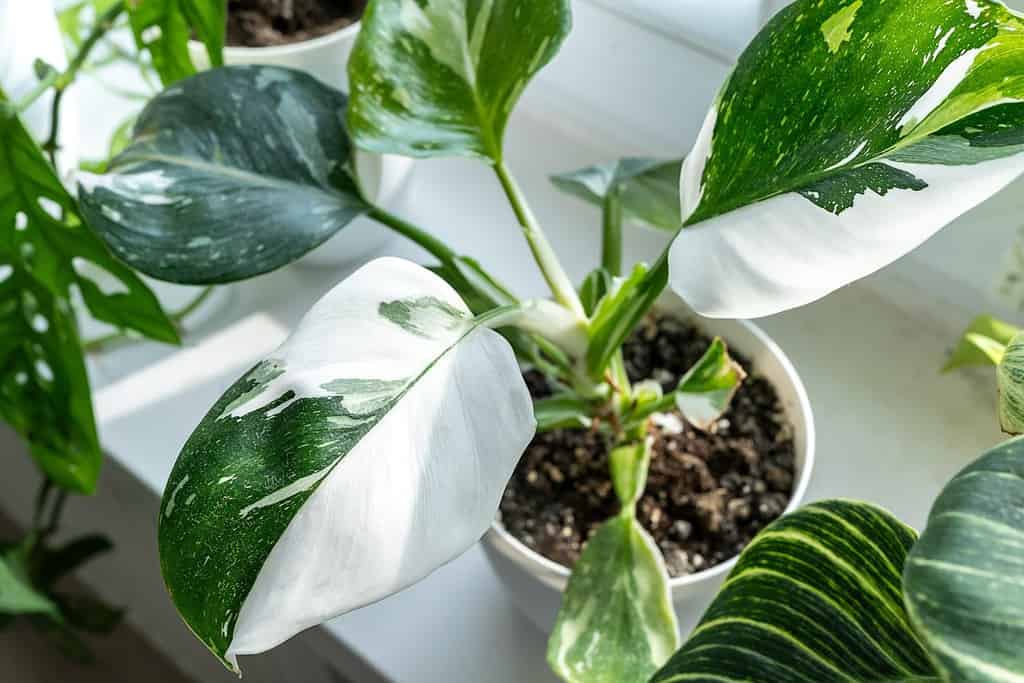
The white princess doesn’t climb like other philodendrons.
©Chekyravaa/Shutterstock.com
Many philodendrons are vining plants with climbing tendencies. The Philodendron ‘White Princess’ is not. However, adding a stake for support as it grows can help keep your White Princess upright. Monitor your plant to determine whether this is necessary.
10. Monitor for Common Philodendron Pests
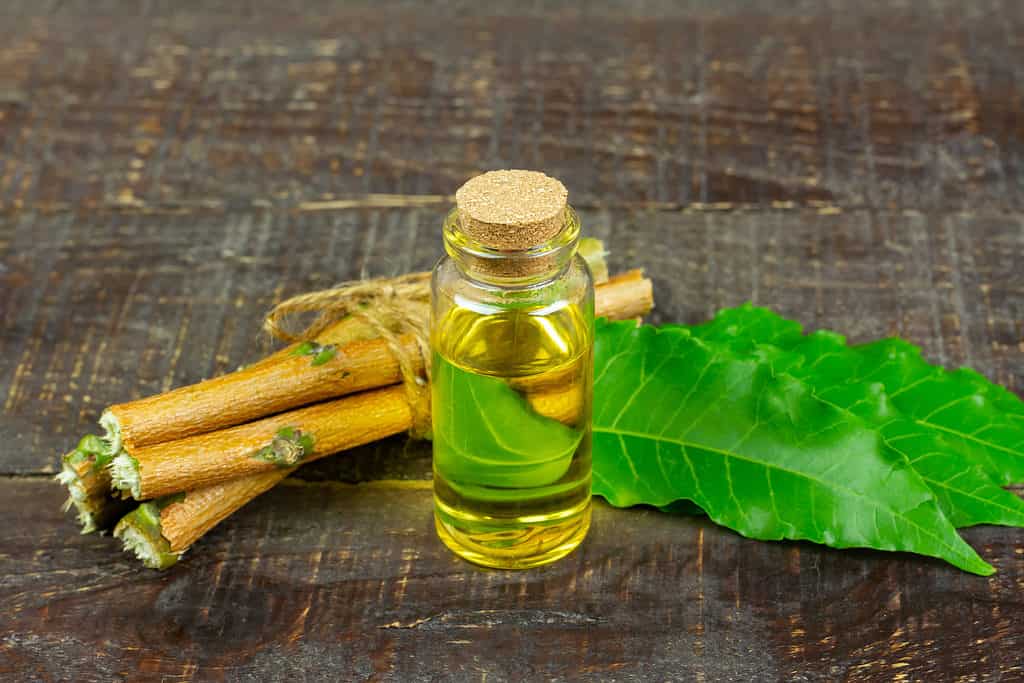
Neem oil can eradicate pests from your plant.
©iStock.com/Ninetechno
Pests love to settle in on the broad leaves and long stems of your White Princess philodendron, and the white hues may make it more difficult to spot these invaders.
Look for thrips, mealy bugs, spider mites, and scale insects. Remove manually with a warm, damp cloth, and use neem oil or treatment if the issue persists.
11. Dust and Wipe Regularly

Dust and wipe your plant’s leaves regularly to keep them healthy.
©Zabavna/iStock via Getty Images
Prevention is vital when avoiding pest infestations. Plus, dust collects on the broad philodendron leaves and interferes with photosynthesis.
Use a damp microfiber cloth or dusting gloves to wipe down the leaves of your White Princess. Do this 1-2 times per month for optimal results.
12. Propagate Your White Princess Philodendron
Propagating your White Princess is the best way to expand and share your collection while preventing overcrowding. The best propagation method is via stem cutting. Here’s how:
Stem cuttings are the best method for propagating philodendrons, and White Princess is no exception.
- Water your white princess a few days before propagating to promote recovery. Only propagate at the start of the active growing season (spring to early summer). Avoid winter propagation.
- Collect clean cutting tools, aroid soil, and a clean vessel of water.
- Use clean, sharp scissors or a knife to cut an established stem from your White Princess. Cut one with a minimum of two nodes (preferably more).
- Place the cutting in the vessel of water with the leaf above the water line. Place the cutting and vessel in indirect sunlight.
- Change the water regularly to avoid bacteria growth.
- Monitor for signs of root growth; this usually takes 2-3 weeks. When roots develop, transfer the White Princess cutting to well-draining potting soil.
- Water your new White Princess plant thoroughly.
- Place your new White Princess in bright, indirect sunlight. Follow regular care tips going forward.
Avoid propagating your plant too often, allowing plenty of time for recovery and new growth.
13. Isolate New Plants
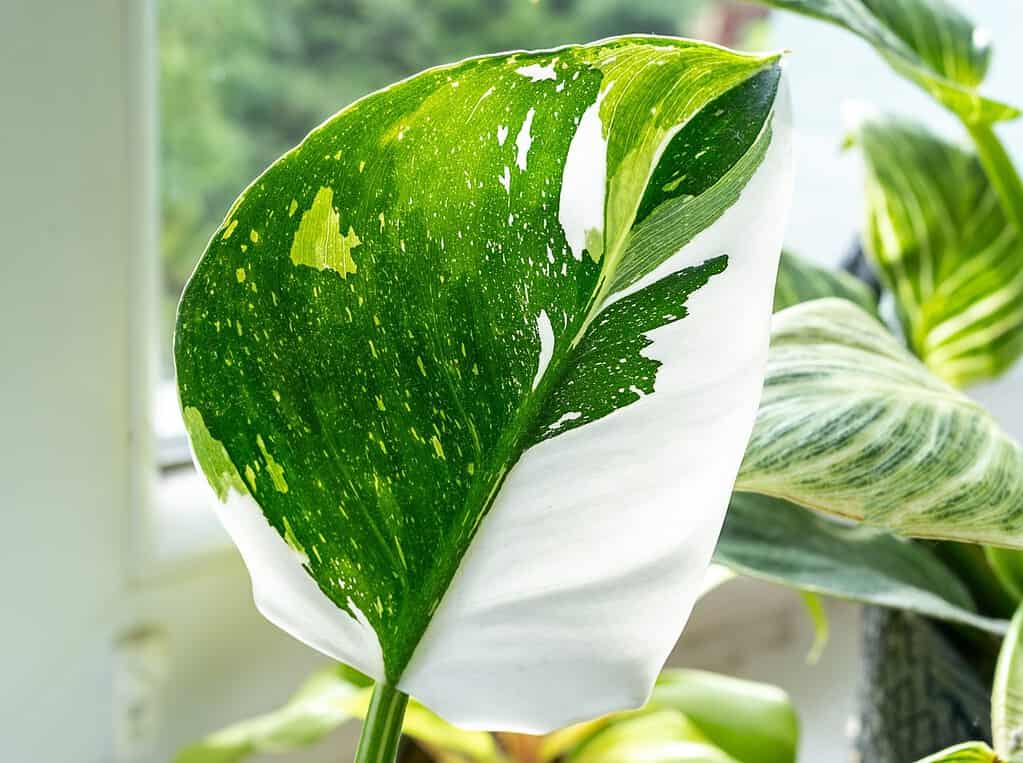
‘White Princess’ is higher-maintenance than other philodendrons.
©Chekyravaa/Shutterstock.com
As the White Princess is sensitive, isolating new plants before placing them in the same area is important. This ensures there are no pests or infections to pass along to your plant. Consider quarantining new plants for 2-3 weeks before placing them next to your White Princess.
14. Rotate Your White Princess Often
Rotate your White Princess philodendron at least once a month to ensure even growth and sun exposure. If you notice your philodendron reaching for the window, move it a little closer.
15. Repot Every 2-3 Years
Your White Princess philodendron will survive becoming rootbound, but it should be prevented or corrected as soon as possible.
Repot your White Princess every 2-3 years to refresh the soil and provide ample room for growth. If you notice roots poking through the drainage holes, it’s time to repot your plant.
Repotting is best left until the spring or summer during the active growing season. This helps your philodendron better recover from the shock of moving.
16. Place Your White Princess Carefully
Be mindful of the surroundings when placing your White Princess philodendron. Avoid placing it directly beside a window to avoid sun scorching and cold drafts, which will kill this sensitive plant.
If you live in a warm, humid area, consider moving your White Princess outdoors for the summer, avoiding areas with direct overhead light.
17. Monitor for Signs of Stress

Philodendron leaves will turn yellow when the plant is stressed from pests, watering issues, over-fertilization, or limited sunlight.
©mokjc/Shutterstock.com
As the White Princess is higher maintenance than other philodendrons, it’s integral to watch it for signs of stress.
One of the most common signs of stress is yellowing leaves. These indicate an imbalance in fertilization, insufficient light, pest invasions, or overwatering. Consider when the yellowing starts to appear and what changes took place in the days prior to determine the cause. Inspect the stems and underside of the leaves, too.
Browning leaves are a sign that your plant needs more water or humidity or it’s been exposed to a cold draft. A lack of water or humidity is usually the issue if the leaves are crispy and dry. If they’re soft or wilting, look for a cold draft.
18. Overwintering White Princess Philodendrons
The White Princess, like other philodendrons, enters dormancy during the winter months. This rest period will alter your philodendron’s care requirements.
Start by reducing the watering frequency, as your philodendron won’t be absorbing as much during the cooler, dormant period. If you are outside USDA zones 9-11, move your White Princess indoors before the temperature drops below 65°F (18°C).
Avoid fertilizing your White Princess during this period, as the slower absorption could scorch the roots. Similarly, avoid propagating during dormancy, as your plant won’t have the resources and energy to fully recover. You should also avoid repotting unless absolutely necessary.
Consider using a grow light to supplement sunlight during the winter months, placing the philodendron far enough away to minimize shock or scorching.
19. Preparing White Princess Philodendrons for Spring
Preparing your philodendron for spring essentially reverses the winter care tips.
Increase watering frequency and provide a good feeding of organic matter or fertilizer. Use this opportunity to propagate, prune, and repot your White Princess.
The photo featured at the top of this post is © Firn/Shutterstock.com
Thank you for reading! Have some feedback for us? Contact the AZ Animals editorial team.







